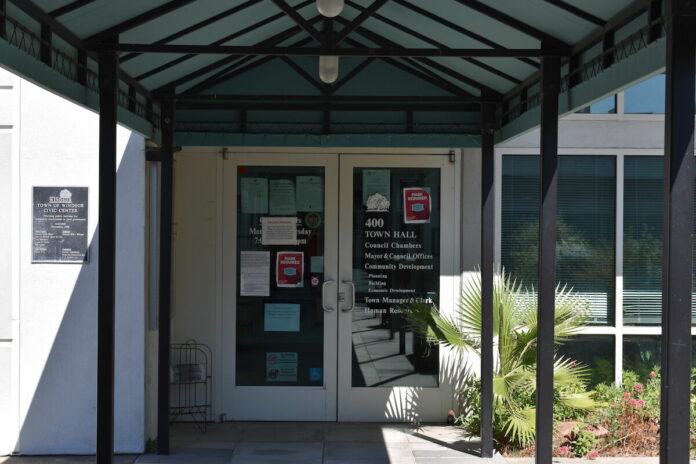The Windsor Town Council will meet for a special session Monday at 6 p.m. to conduct a public hearing and receive public input about district boundaries.
Windsor used an at-large election system, with five four-year council seats elected to four year terms based on townwide votes until switching to a district elections system in 2020 under threat of lawsuit. The current system has Windsor divided into four geographical districts, each with one council seat. The mayor is elected by a single townwide (at-large) vote every two years, rather than being selected by the five member council from amongst itself following each election.
It’s common for small towns like Windsor to face lawsuits alleging their at-large systems marginalize Latino and other minority groups in violation of the California Voting Rights Act (CVRA), although firms filing such lawsuits have been criticized by some as opportunistic.
Although the district-based system is new, with districts adopted in 2019, the town is required to redraw the boundaries using U.S. Census data collected in 2020, in accordance with the California and Federal Voting Rights Acts, according to the town staff report. The redistricting process requires at least four public meetings in addition to public outreach “to ensure minority populations and communities of interest are aware of the redistricting effort and are provided with options to participate.”
In accordance with AB 849 — also known as the FAIR MAPS Act — the town council must draw and adopt boundaries that: comply with federal requirements of equal population and the Voting Rights Act; are geographically contiguous; do not divide neighborhoods or communities of interests, e.g. socio-economic geographic areas that should be kept together; display easily identifiable boundaries; are compact; and do not favor or discriminate against a political party.
This first public hearing is to both inform the public about the redistricting process as well as receive community input regarding which factors should be considered in establishing district boundaries.
A second public hearing will take place Oct. 25, with the third and fourth hearings yet to be scheduled.
Two potential near-future changes to the current make of the council, which was formed under duress and has been widely criticized, could make the current district redrawing obsolete far before the 2030 U.S. Census, however. One potentiality would have the council revert to its old, at-large system entirely with five council members selected at large and a two-year mayor selected by appointment, as is common in many cities. This would require no districts at all.
Another would retain the district system, but abolish the at-large mayor by voter referendum, leaving the mayor to be selected by appointment from five equal district-based council seats. This would require another redistricting effort if it were implemented, as the town would be divided into five districts rather than the current four.








